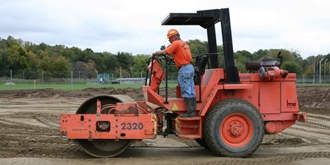Comprehensive Excavation Strategies: Understanding the Basics for Success
In the realm of building and construction and civil engineering, the relevance of effective excavation approaches can not be overemphasized. The careful planning, exact implementation, and meticulous focus to detail needed in excavation projects demand a comprehensive method that encompasses different fundamental facets. From initial dirt evaluation to the application of precaution and routine progress surveillance, grasping these core aspects is crucial for attaining success in any type of excavation venture. The real mastery lies not merely in understanding these basics but in flawlessly integrating them to navigate the intricacies of excavation jobs with skill.
Understanding Excavation Job Planning

The initial phase of any type of excavation project is the planning stage, where critical choices are made that can dramatically affect the outcome of the task. Comprehending the project budget plan, range, and timeline constraints is crucial for developing a thorough excavation strategy that makes sure the project's success.
One secret aspect of excavation project preparation is the advancement of a thorough timeline that outlines the series of landmarks, target dates, and tasks. This timeline works as a roadmap for the project team, permitting them to track progression and make needed adjustments to ensure the project remains on routine. Additionally, a distinct budget that makes up all expenses, including tools leasing, labor expenses, and products, is crucial for preventing price overruns and delays. By meticulously taking into consideration all these aspects during the drawing board, excavation projects can be implemented efficiently and properly, leading to effective results.
Dirt Evaluation and Website Examination
Performing complete soil analysis and site evaluation is a critical action in the preparation stage of any type of excavation job. Dirt evaluation includes figuring out the structure, framework, and homes of the soil at the excavation site. This details is essential for understanding the dirt's bearing capability, moisture material, and potential for erosion, which are vital elements in identifying the excavation techniques and tools required for the task.
Website analysis surpasses dirt evaluation and incorporates a broader assessment of the total website problems. This examination includes identifying any kind of prospective hazards, such as underground energies, environmental issues, or unstable surface, that might impact the excavation procedure. By completely examining the site, task managers can create effective excavation approaches that prioritize safety and security, effectiveness, and environmental management.
Making use of sophisticated innovations like ground-penetrating radar, soil tasting, and drone surveys can boost the precision and effectiveness of dirt evaluation and website analysis. Spending time and resources in these initial actions can inevitably conserve time and protect against expensive hold-ups or complications during the excavation process.
Tools Selection and Utilization
Effective excavation jobs rely greatly on calculated devices option and application to make certain ideal efficiency and efficiency. Choosing the best equipment for the job is critical in making the most of efficiency and minimizing downtime. Elements such as the type of dirt, depth of excavation, and job range play a considerable duty in establishing the most ideal equipment for the task available.

In addition to choosing the ideal tools, correct use is vital to project success. Operators must be educated to deal with the tools safely and effectively - dump truck companies in ohio. Normal maintenance checks and timely repair work assist stop break downs and ensure constant performance throughout the job
Precaution and Regulations Conformity
In the realm of excavation jobs, prioritizing precaution and conformity with regulations is extremely important to making certain a legally audio and safe and secure operational setting. Precaution incorporate a series of methods, including conducting detailed website assessments, implementing correct signage and barriers, and giving ample safety training for all personnel associated with the excavation process. Adherence to regulations, such as OSHA helpful site needs in the USA, makes certain that the excavation project satisfies the needed criteria to secure employees, onlookers, and the surrounding atmosphere.

Surveillance Progress and Adjusting Methods
Just how can forecast supervisors effectively track the innovation of excavation jobs and adapt their techniques accordingly to optimize end results? Surveillance development is crucial for guaranteeing that excavation tasks stay on track and meet due dates.

Verdict
In conclusion, mastering the basics of extensive excavation strategies is important for the success of any type of job. By recognizing job preparation, evaluating soil and site conditions, choosing suitable tools, abiding by safety and security regulations, and checking progression, task supervisors can make certain a anonymous reliable and smooth excavation process. Carrying out these methods will certainly lead to effective end results and lessen possible threats or problems during the excavation job.
The initial phase of any excavation task is the planning phase, where crucial decisions are made that can substantially impact the outcome of the job. Recognizing the task budget plan, timeline, and range constraints is critical for developing a detailed excavation strategy that guarantees the task's success.
How can forecast supervisors efficiently track the innovation of excavation projects and adjust their methods as necessary to enhance outcomes? By closely keeping an eye on progression and being eager to adapt approaches, job supervisors can improve the general success of excavation tasks.
By comprehending project preparation, analyzing dirt and site conditions, choosing suitable equipment, conforming with safety policies, and keeping an eye on progress, task supervisors can make certain a smooth and efficient excavation procedure.